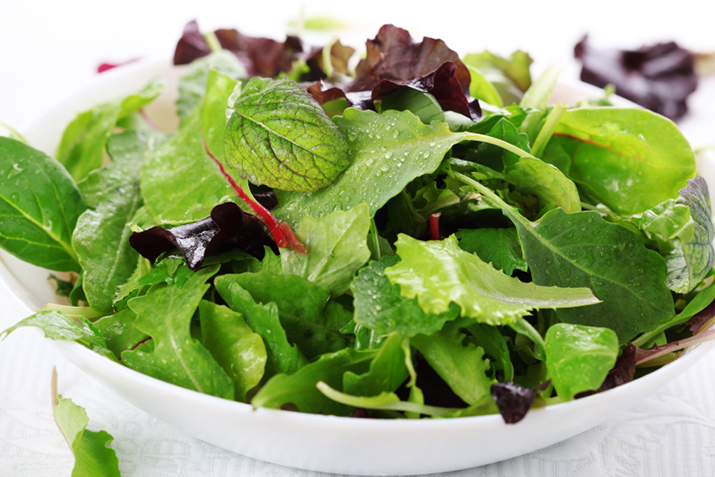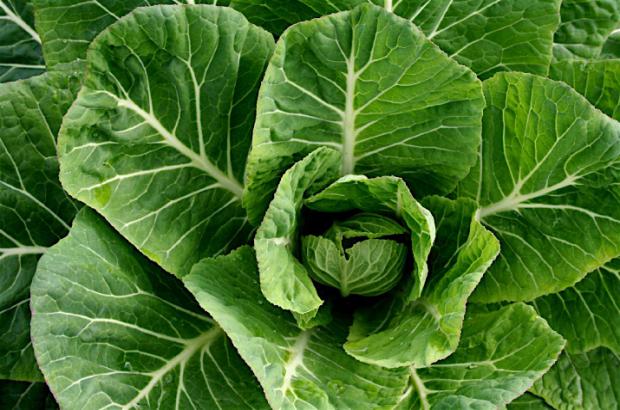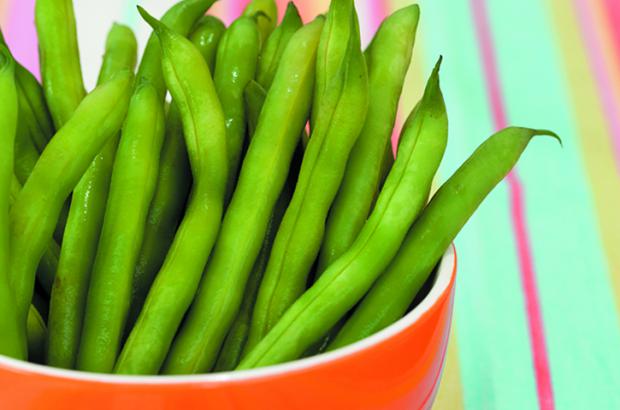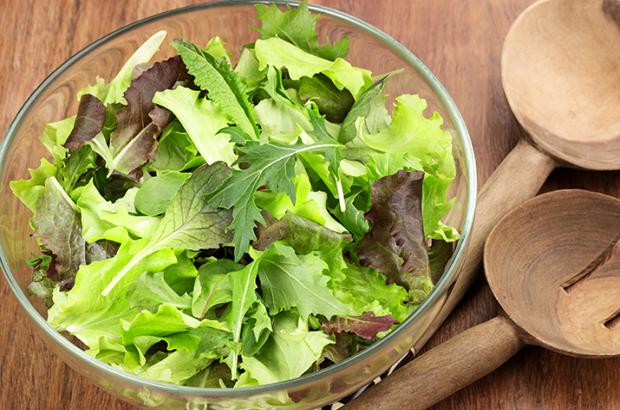Article
Salad Greens

Loose-leaf and tatsoi and butterhead—oh my! Salads today are a far cry from a simple bowl of iceberg lettuce. Whether you grow your own or pick them up at your co-op or farmers market, a myriad of salad greens make for fun and nutritious eating.
Salad has long been a staple, of course. Even in ancient times, Greeks and Romans ate lettuce for a good night's sleep and made love potions using arugula and lettuce.
Today, lettuce is the second most popular fresh vegetable in the United States, after potatoes, with the average American eating about 30 pounds of lettuce each year. That's five times the amount we ate in 1900.
The nutrition you'll get from salad greens will vary with the variety, but they're generally high in vitamin A and potassium and a good source of fiber. Many are also a good source of iron, vitamin C and calcium.
Here are some examples of the variety of greens you might explore:
- Arugula is a peppery green with long, thin leaves, great for perking up an otherwise bland salad. Buy it in small bunches or combined with other greens in a salad mix. It's also known as rocket, Italian cress, Mediterranean rocket, rugola, rugula, roquette and rucola.
- Beet greens are tender and slightly spicy, with purplish red veins; they become brighter and sweeter when steamed.
- Butterhead lettuce has soft, smooth, flavorful leaves that are delicious in salads or used as a bed for other dishes. Boston and bibb (or limestone) are two types of butterhead lettuce.
- Cress has a tough, fibrous stem with small green, peppery leaves. It's very perishable, so use it as soon as possible when you get it home. Watercress is the most popular variety, but upland cress, curly cress and land cress are also available.
- Dandelion greens can be cooked or served raw as a salad green. They're a tad bitter.
- Endive has a soft texture and slightly bitter taste. Its oval, scoop-like leaves make it fun and practical for hors d'oeuvres. You might also see it referred to as Belgian endive, French endive, witloof, witloof chicory and Belgium chicory. Red endive is a French variety.
- Escarole is mildly bitter and crisp, with sturdy leaves. Often used in Italian cuisine, it's also known as Batavian endive, scarole and broad-leaved endive. Use the young, tender leaves in salads, but cook the older leaves as a side or use them in soups.
- Frisee has curled, pale green leaves that are slightly bitter (though the paler inner leaves are more tender and mild). It's also known as curly endive and chicory.
- Iceberg lettuce is a good keeper, though it's not as flavorful or nutritious as other salad greens. Iceberg reputedly got its name because it was shipped in old train carriages with ice on top of it. "The icebergs are coming!" was the refrain when the trains came through towns.
- Loose-leaf or leaf lettuce has a mild flavor and ruffled surface that's fun in salads and on sandwiches. The leaves are large and pliable. You'll find green leaf and red leaf lettuce.
- Mache is also called field salad, lamb's lettuce, corn salad, field lettuce and fetticus. It has small, delicate leaves that are mild and slightly sweet. It's often included in salad green mixes.
- Mesclun is a mix of young salad greens, often including mizuna, tatsoi, frisee, oakleaf, rugula, radicchio, mustard greens and red chard.
- Mizuna is a Japanese mustard green with a peppery, pungent flavor and tender leaves. It's also referred to as Japanese greens, spider mustard, xue cai, kyona, potherb mustard and California peppergrass.
- Oakleaf leaves look like, well, oak leaves. Similar in appearance to red and green leaf lettuces, but a little smaller, oakleaf is tenderer, though the stems are crunchy. There are red and green oakleaf lettuces.
- Radicchio is a lovely red-purple green that you can purchase as a compact, round head or an elongated shape. Cooking transforms the taste from bitter to sweet. It's also called chioggia, red chicory, red leaf chicory, and red Italian chicory. Radicchio is beautiful in a salad with other greens, and the leaves can also be used in hors d'oeuvres.
- Romaine is a large, stiff, elongated leafy lettuce with a thick, crunchy center rib. Also known as Cos lettuce, it's the classic Caesar salad green. Green is the most popular, but red romaine is also available.
- Tatsoi is an Asian green with small, rounded, spoon-shaped leaves and a mild mustard flavor. It can be used in place of baby spinach.
If you have a favorite salad green, by all means use it solo to create a salad you'll love. But mixing varieties creates flavor and texture interest. Consider a mild, a crisp and a peppery variety in your next salad, for example.
For salad inspiration, check out these recipes: Baby Greens and Beet Salad with Lemon Chia Dressing, Golden Beet Salad with Honey Apple Dressing and Grilled Peach and Prosciutto Salad.
Of course, salad greens also provide the finishing touch on sandwiches, and they serve as a bed for just about any fish, grain, poultry, or other savory dish, like these Fig and Goat Cheese Turnovers with Mixed Green Salad. Use them many places where spinach is called for, such as in egg dishes or atop pizza. This Spring Greens Pizza attests to the success!
One cooking tip: Don't use knives to cut salad greens; tear it instead. Most knives (except plastic ones made specifically for cutting lettuce) can cause the greens to rust.
Whether or not your greens are organic, you need to wash them well. (Even organic produce can harbor bacteria.) One exception: If you purchase greens in a package labeled "prewashed," "triple washed" or "ready to eat," they should be safe without further washing. Not all packaged greens have been washed, so check the label.
You can simply rinse the salad greens under cold running water and pat dry. Another method is to immerse the greens in a large pan of cool water and let them soak for a couple of minutes (the grit will sink to the bottom). Place the leaves in a colander and rinse, then dry in a salad spinner or pat dry with a clean towel or paper towel.
There are many ways to store salad greens in the refrigerator once they're clean and dry. Some suggest storing them in a plastic bag with a paper towel inside to absorb excess moisture. Others recommend placing greens in a cardboard box inside a plastic bag, and still others swear by putting greens in a plastic bag into which you've blown air (puff it up!) and then tied shut. Some even lay greens out on a clean dishtowel and then roll it up; when it's time for salad, simply take the towel out of the refrigerator and unroll how many greens you'd like. One of the easiest ways to store clean, dry greens is in vegetable storage bags made especially for the purpose.
No matter how you store them, keep salad greens away from fruit; the ethylene gas emitted by the fruit will cause the greens to decay faster. Greens should last about a week if properly stored, though in most cases the sooner you eat them the better.













